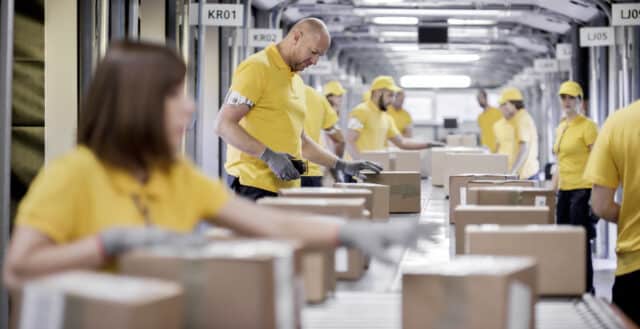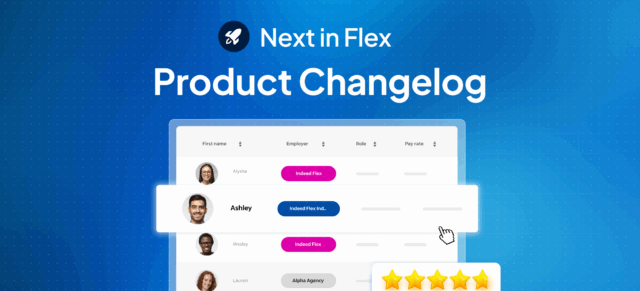
Aside from the obvious expense of hiring replacements that employee turnover brings, it creates issues that run much deeper than that. Left unaddressed, high turnover can undermine productivity, drain resources, and disrupt team stability. These hidden costs can accumulate quickly, impacting both day-today operations and long-term profitability. By recognising the full scope of turnover’s effects, employers can take the right course of action to build a more resilient and loyal workforce.
Unpacking the true cost of employee turnover
Beyond simply being a problem for HR teams, the true financial and operational toll of staff turnover often goes unrecognised. Understanding the full breadth of these costs is essential for making informed decisions about retention strategies.
The visible price tag: Direct replacement costs
The immediate, quantifiable expenses associated with turnover are only the tip of the iceberg. Each time an employee departs, organisations incur:
- Advertising and job board fees
- Recruitment agency charges
- Management and HR time spent on screening and interviewing
- Onboarding and induction costs
- Equipment, uniforms, and administrative setup
- Time spent waiting for a new employee to reach full productivity levels
For hourly roles, these direct costs quickly add up. Data from Midlands Technical College shows that replacing an hourly worker typically costs between £3,000 and £8,000.
The invisible iceberg: Deeper, indirect costs
Beneath the surface, turnover impacts a business in ways that are harder to measure but equally—if not more—significant.
- Lost productivity and efficiency: Departures create workload gaps. Remaining team members absorb extra duties, often leading to stress, mistakes, and delays. New hires face a learning curve before reaching expected productivity.
- Erosion of institutional knowledge: Departing staff take with them years of expertise and informal know-how. This ‘tribal knowledge’ loss can slow down decision-making and force teams to reinvent solutions.
- Damaged team morale and engagement: Frequent exits can undermine trust and stability, making remaining employees anxious about their own futures and less motivated to contribute.
- Compromised quality and customer satisfaction: Consistency suffers when teams are in flux. A Wharton School study found that a 1% rise in weekly turnover led to a 0.8% increase in product defects. In customer-facing sectors, this can result in lost clients and weaker brand loyalty.
These hidden costs often far exceed the initial recruitment expenses and can quietly erode profitability if left unchecked.
Proactive retention: Building a culture that encourages loyalty
Addressing turnover at its source means shifting from reactive hiring to a proactive, people-first approach. The focus should be on creating an environment where employees feel valued and see a future for themselves.
Creating a supportive and engaging work environment
A strong workplace culture starts with leadership and is built on open communication, recognition, and psychological safety. According to research, more than half of those who leave voluntarily believe their manager could have intervened. Practical steps include:
- Regular, two-way feedback sessions
- Public and private recognition of achievements
- Transparent decision-making processes
- Encouraging input and new ideas from all levels
For a deeper look at how fair pay and transparency contribute to a positive workplace, explore how Indeed Flex sets a new standard.
Investing in employee development and career pathways
A lack of growth opportunities is a key reason employees seek new roles. Companies that invest in their people see measurable improvements in retention and engagement. Effective strategies include:
- Structured training and upskilling programmes
- Mentorship and coaching initiatives
- Clear, achievable career progression paths
- Regular development conversations and goal setting
For further insights on solid retention strategies, including employee development, consult the Society for Human Resource Management’s (SHRM) guide.
Strengthening your onboarding process
Onboarding sets the tone for an employee’s entire tenure. A well-designed programme should:
- Extend beyond paperwork to include cultural immersion
- Provide a clear overview of role expectations
- Assign a mentor or buddy for guidance
- Schedule regular check-ins during the first months
A thoughtful onboarding process reduces early attrition and builds loyalty from day one.
Strategic workforce management to combat instability
While culture is foundational, operational strategies are equally important in managing turnover and its effects.
Using data to understand and predict turnover
Workforce analytics allow businesses to move from reactive to predictive management.
By systematically tracking and analysing:
- Exit interview themes
- Employee engagement survey results
- Absenteeism and turnover rates by department
- Performance and productivity metrics
…organisations can identify patterns, pinpoint root causes, and intervene early. For more on gaining actionable workforce insights, read about why greater visibility enhances cost control.
Embracing flexible staffing to keep operations running smoothly
No matter how strong your retention strategy, some turnover is unavoidable. A flexible staffing approach acts as a buffer, ensuring business continuity and preventing burnout among permanent staff. Key benefits include:
- Rapidly filling gaps with pre-vetted temporary workers
- Scaling teams up or down to match demand
- Reducing pressure on existing staff during transitions
- Maintaining quality and service standards
For example, Doubletree successfully implemented a blended workforce model, to manage fluctuating demand without compromising guest experience.
The long-term value of investing in your people
The business case for retention is clear: the ongoing investment in your people consistently delivers better returns than the recurring expense of replacing them. A stable, skilled, and engaged workforce drives innovation, customer loyalty, and sustainable growth. By combining a supportive culture with agile workforce management, organisations can minimise the disruption of turnover and build a foundation for long-term success.
And creating a supportive environment, offering clear development opportunities, as well as using data-driven insights, results in a workplace where employees feel valued and motivated to stay. Coupled with flexible staffing solutions to manage inevitable transitions, this proactive strategy builds a stable, engaged workforce that drives long-term success.
Boost your workforce strategy
Reducing turnover and ensuring operational stability is achievable with the right tools and support. Discover how Indeed Flex’s on-demand staffing solutions can help you maintain a high-performing, engaged workforce while minimising disruption.








